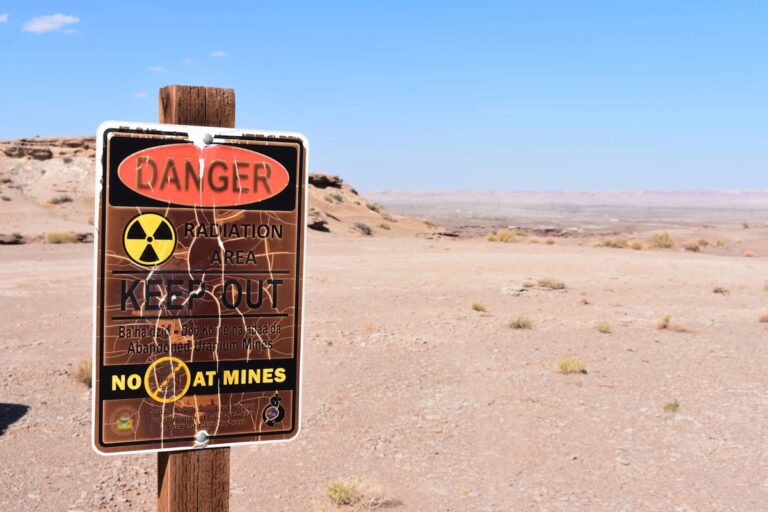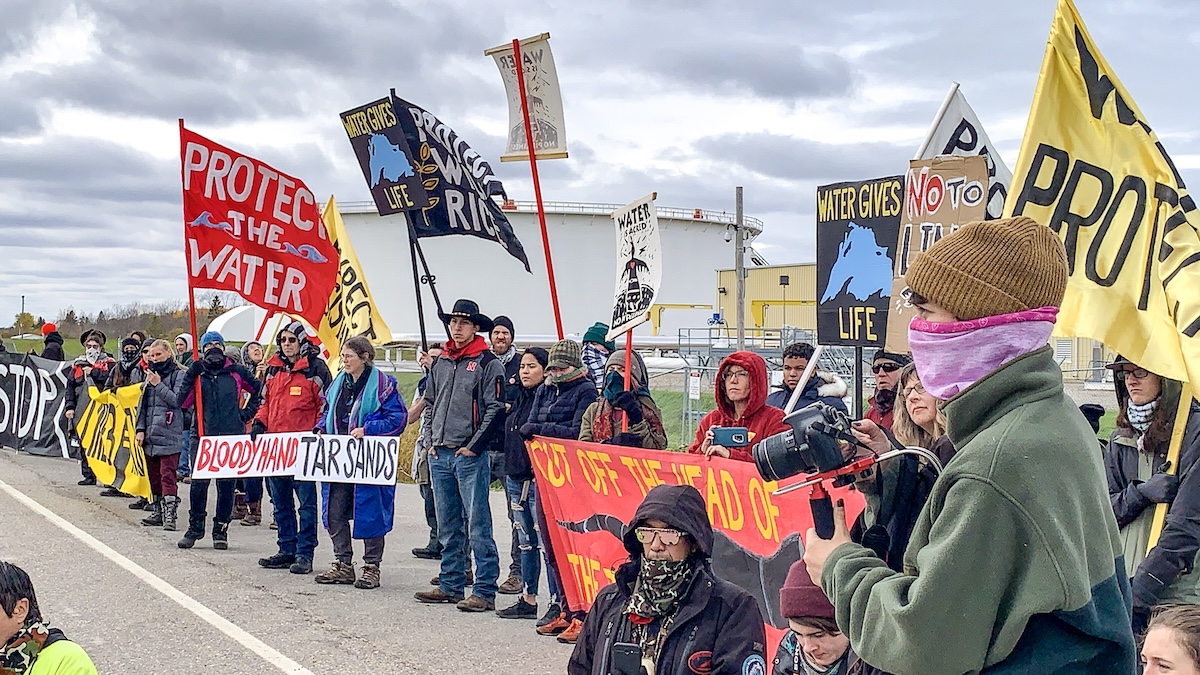By Kerul Dyer
The dangers and impacts stemming from the extraction of uranium from deep below ground around the world can hardly be exaggerated. Now, as the global supply chain of uranium has shifted after a ban on the import of uranium from Russian sources, the pressure is now coming down in several regions in the US, namely Alaska, Wyoming, Arizona, and New Mexico. Recently proposed mines, new mines coming into operation and those that have been offline for decades are being prioritized in an effort to produce yellowcake, the stinky powdered form of uranium that can be further refined for a wide range of uses.
Reading between the lines, one of the proposed solutions to the climate crisis is to increase the use and reliance on nuclear energy. As well, the Pentagon is pushing for the modernization of nuclear weapons that also require the radioactive material.
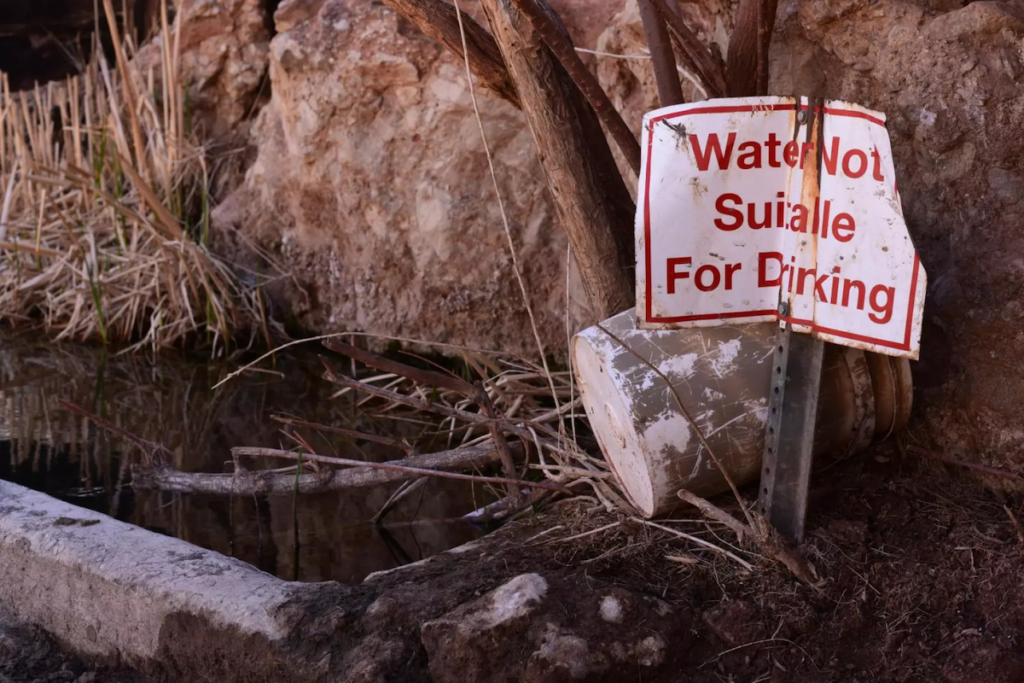
Native Tribes in the Southwest have been battling mining companies and the US government for more than a half century because of the impacts the mines have had on their ancestral homelands, Tribal members, the water, and cultural resources. This year, the state of Arizona filed a lawsuit challenging the federally established National Monument near the Grand Canyon called Baaj Nwaavjo I’tah Kukveni. Underlying interests in the lawsuit include opening the region to more uranium mining. Now the Hopi, Havasupi, and Navajo Nation have all intervened in the lawsuit, supporting the protection of land within the Monument. If Arizona’s lawsuit is successful, it will open up huge swaths of land around the Grand Canyon to uranium mining and processing.
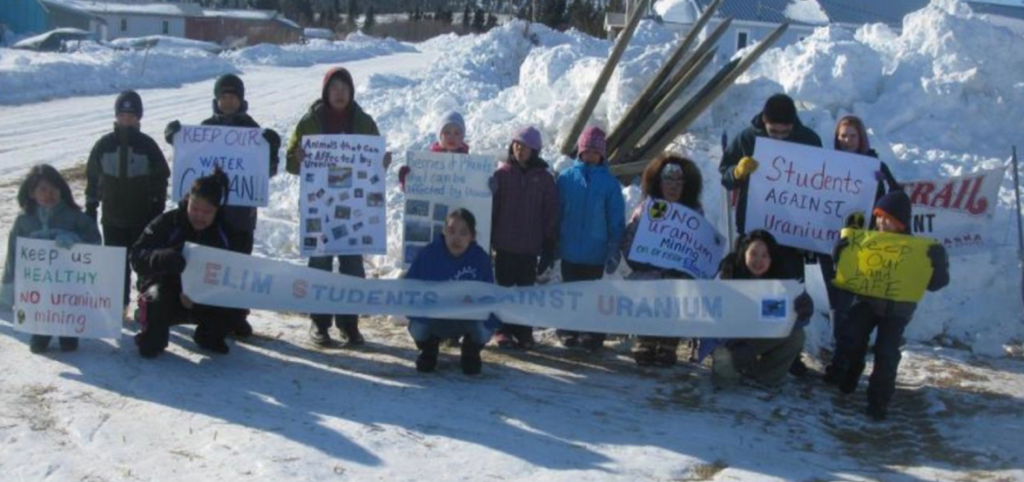
Another Tribal dispute surrounding the upward trend on uranium extraction involves the Village of Elim Tribe, in Northwest Alaska. The Boulder Creek mining property was recently acquired by Panther Minerals, a Canadian company that hopes to expand uranium exploration within the headwaters of the Tubutulik River. Residents of the Elim Reservation operate in a subsistence economy at the mouth of the river, on Norton Bay.
“This new mining company plans to expand their exploration activities even beyond those of the original one,” said Emily Murray, a resident of Elin and president of Norton Bay Watershed Council. “Turning our river into a uranium mining district will completely destroy our way of life.”
In Wyoming, Global Uranium just acquired five new leases in the Gas Hills Uranium District, and plans to begin mining and processing the uranium deposits into yellowcake this year. According to reporting by Mining Technology, more than 100 million pounds of uranium has been extracted from Gas Hills District and contains 50 million pounds more.
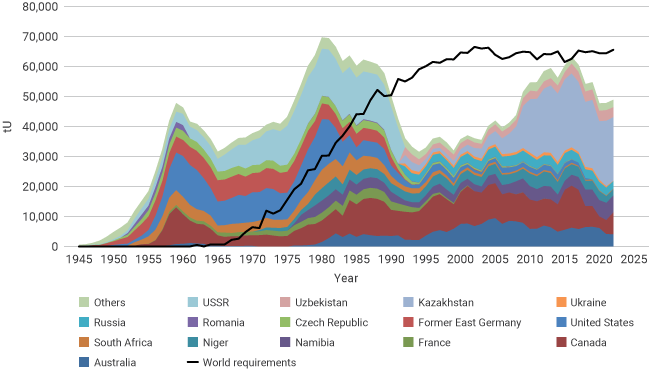
The rapid expansion of uranium mining to meet current demand and a promise for more nuclear use as a bridge solution to climate change is not limited to the US. Massive scale, new projects are also underway in Argentina and Brazil, raising alarms among environmental advocates. And, importantly the continuation of infamous mining sites in Congo continue, along with 16 other African nations that produce and export uranium products. Most recent global data indicates that about two-thirds of the world’s supply uranium is still sourced from three countries, including Kyrgyzstan (43%) Canada (15%), and Australia (11%).
The transport, use, and extraction processes of uranium are far from efficient, and poses dire threats throughout its lifecycle to people, land, and water resources. And once produced, yellowcake (which is composed of U-238) has a half-life of 4.468 billion years. Throughout that period it emits radiation at a slow rate, making it extremely hazardous for life on the planet.
While the production of yellowcake and associated processed uranium steadily declined in the US for the past decade, the many new developments and proposed uranium districts is cause for concern for all of us.
We are, with this approach to the use of our earthly resources, devastating the idea of a survivable planet.

